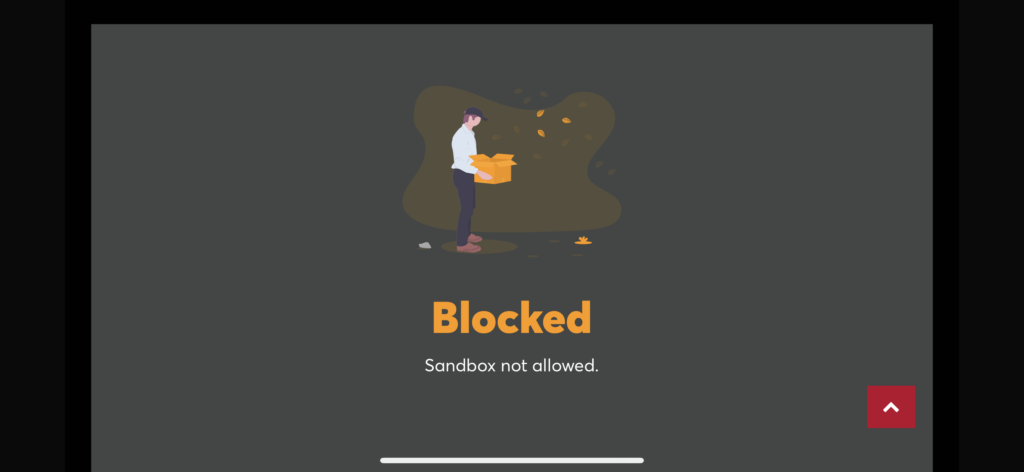If you’ve encountered the message “novafork please disable sandbox”, you’re likely dealing with issues related to application restrictions, virtual environments, or system permissions. This phrase has been popping up in development and sandboxed application contexts, leading users to seek clarity and solutions.
In this article, we’ll explore what “novafork please disable sandbox” really means, why it occurs, and how you can resolve it. Whether you’re a developer working on system processes or a curious user running into this error, this guide offers practical insights and actionable fixes.
What Is Novafork?
Novafork appears to refer to a virtualized or forked environment typically associated with running apps in isolated environments. It may be related to sandboxing in operating systems or application frameworks that restrict an app’s access to certain system-level functions for security and performance purposes.
Understanding Forking in Software
In software development, a “fork” means creating a new process by duplicating an existing one. This is common in Unix-like systems. When paired with the term “nova,” it might indicate a newer or custom fork used for running applications in a restricted (sandboxed) mode.
What Does “Please Disable Sandbox” Mean?
What Is a Sandbox?
A novafork please disable sandbox is a security mechanism that isolates running programs, restricting access to system resources. It protects the host system from potentially harmful operations by keeping the application contained within a limited environment.
Why the Message Appears
When you see “novafork please disable sandbox”, it usually means that an application or script is trying to execute a function or access a resource that the sandbox prevents. The application is requesting broader access by asking to “disable sandbox.”
This request often appears in:
- Custom-built apps on Linux or Android
- Game mods or cheat engines
- Development tools running in virtual environments
- Embedded applications with permission issues
Reasons You Might Need to Disable the Sandbox
1. Application Needs Elevated Permissions
Apps that need to access hardware components or modify core system files often can’t do so from within a sandbox. Disabling the sandbox allows such applications to function correctly.
2. Compatibility with Legacy Tools
Some legacy development tools or scripts weren’t designed to work inside novafork please disable sandbox environments. If your app relies on these, disabling sandboxing might be necessary.
3. Debugging and Testing
During development, you may need to turn off sandbox restrictions temporarily to properly debug or test functionality that’s otherwise restricted.
How to Disable Sandbox for Novafork
Disclaimer: Disabling the sandbox can expose your system to security risks. Only proceed if you understand the implications and trust the application.
On Linux (Command Line Tools)
If you’re dealing with a Linux environment and running an app using novafork please disable sandbox, try launching the app with a flag that disables sandboxing. For example:
bashCopyEdit./novafork-app --no-sandbox
Or, if you’re using Electron-based apps:
bashCopyEditelectron myApp.js --no-sandbox
Note: This flag works only if the app is designed to accept it.
On Android (Rooted Devices)
Apps requesting to novafork please disable sandbox on Android may require root access. Tools like Magisk can sometimes bypass sandbox restrictions, but this is not recommended for inexperienced users due to security risks.
In Virtualized Environments
If you’re running applications in a Docker container, VM, or Flatpak, you may need to:
- Modify container permissions
- Use flags like
--privilegedin Docker - Set
flatpak override --user --filesystem=home app.id
Editing Configuration Files
Some apps include a config file with an option to enable or disable sandboxing:
iniCopyEdit[sandbox]
enabled=false
Look for .conf, .ini, or .json files in the app’s root or installation directory.
Risks of Disabling Sandbox Mode
1. Security Vulnerabilities
Sandboxing is designed to protect your system. Disabling it can make you vulnerable to malicious code or unstable applications.
2. Stability Issues
Some apps may behave unpredictably when sandbox restrictions are lifted, especially if they’re not designed to run in full-access mode.
3. Voiding Warranties or Terms
For enterprise or managed devices, disabling security features like sandboxing may violate usage policies or warranties.
Best Practices Before Disabling Sandbox
- Backup Your System: Always make a restore point or system backup.
- Test in Virtual Machine: Use a VM to simulate the environment before applying changes to your main system.
- Research the App: Ensure the application is safe and from a trusted source.
- Limit the Scope: If possible, disable sandbox only for specific apps rather than system-wide.
Alternatives to Disabling the Sandbox
1. Use Developer or Beta Versions
Some apps have developer modes that grant additional permissions without disabling the novafork please disable sandbox.
2. Grant Specific Permissions
Rather than turning off the sandbox entirely, try granting only the necessary permissions via:
chmodorchownin Linux- System Preferences in macOS
- Settings > App Permissions in Android
Expert Insights and Community Forums
Many users encountering this issue have shared experiences on platforms like:
Search for “novafork disable sandbox” along with your app or platform for specific solutions.
Conclusion
The message “novafork please disable sandbox” is a prompt rooted in system-level permissions and security protocols. While disabling sandbox mode can resolve certain application limitations, it should be done cautiously and only when necessary. By understanding the context and implications, you can make an informed decision and keep your system safe and efficient.
If you’re unsure about making these changes, consider consulting with a system administrator or software expert.

